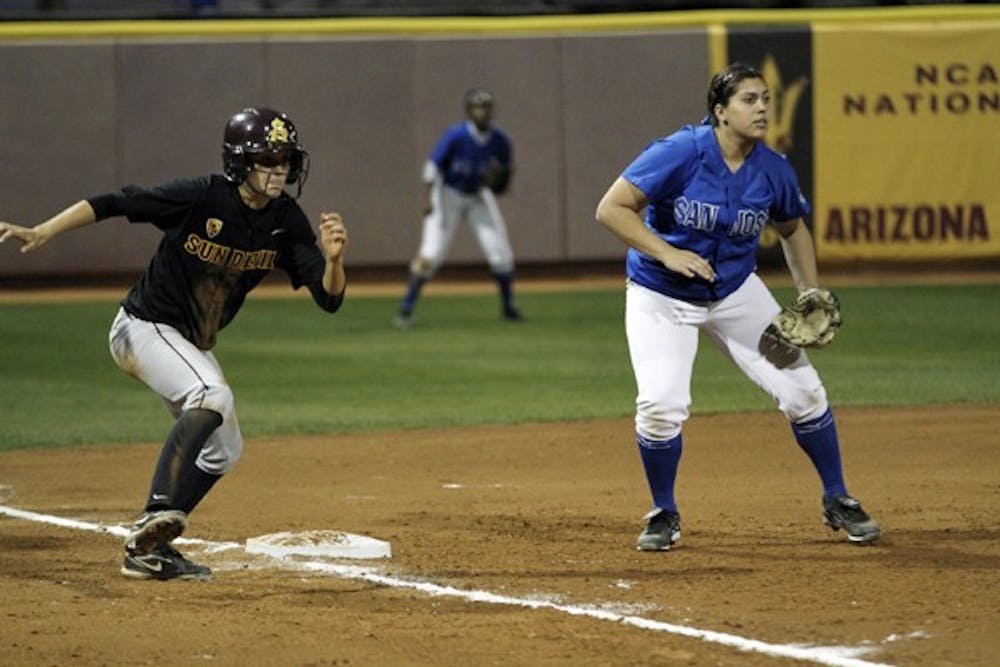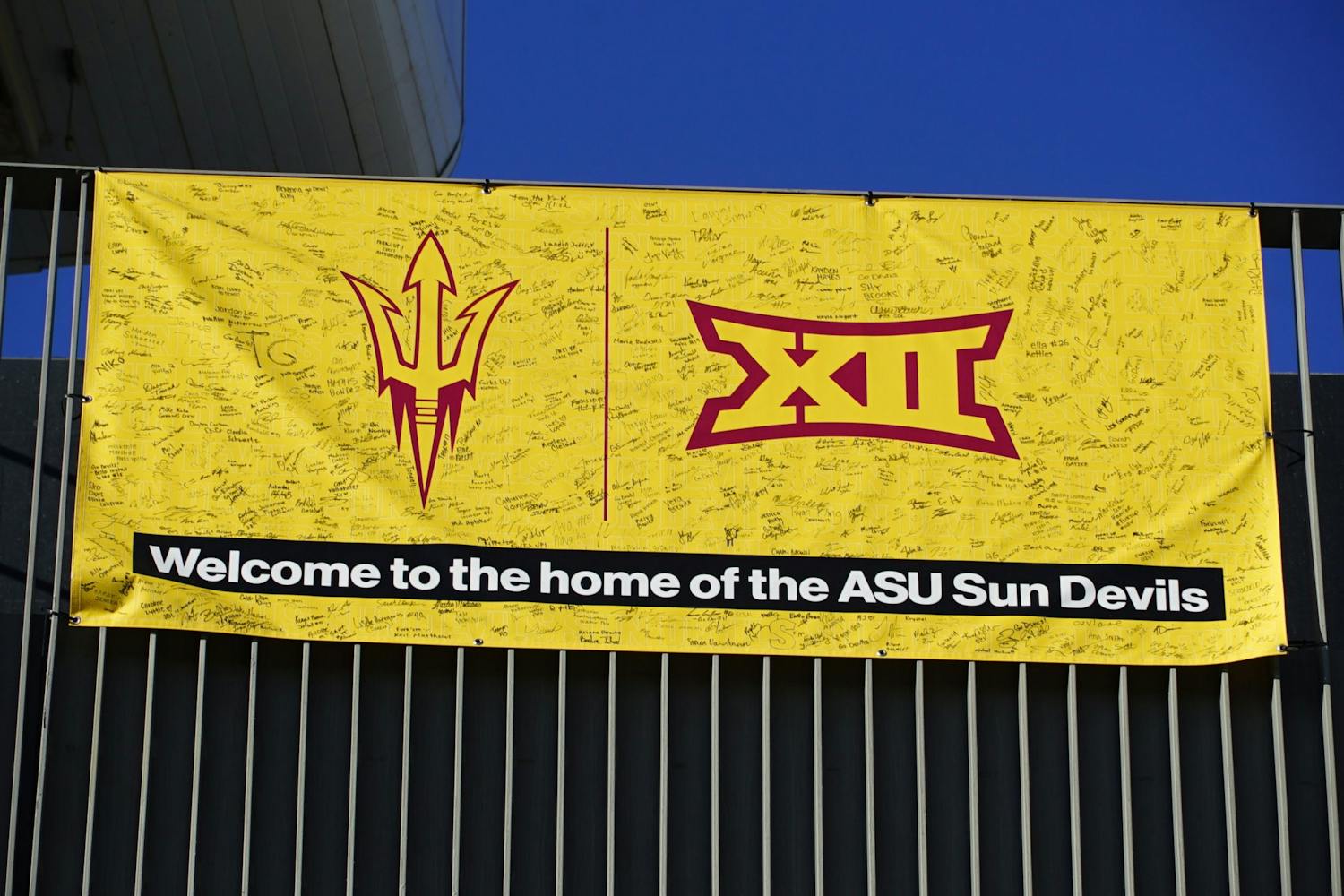If the nation’s softball conferences were high school students, the Pac-12 would be the popular girl in gym class who says running is so overrated.
The nation’s most prestigious softball conference doesn’t steal often. Only two teams from the Pac-10 last year ranked in the top 80 in stolen bases per game and ASU ranked No. 167.
However, this doesn’t mean the team doesn’t know how to steal. In her first three years, senior shortstop Katelyn Boyd stole 60 bases in 62 attempts.
Despite her spotless 20-20 mark in 2011, Boyd finished outside the top 100 players in stolen bases per game.
So why doesn’t she steal more?
“The idea of stealing bases is done by having two things,” coach Clint Myers said. “One is having someone who is very good at it, and two is by having the element of surprise. We also have been very fortunate to be able to swing the bats where you don’t have to do a lot of that.”
An excess of catching talent in the Pac-12, which includes ASU freshman Amber Freeman, also contributes to the low amount of stolen bases.
Freeman took over after second team All-Conference catcher Kaylyn Castillo graduated.
Yet there is a lot of upside to the backstop from Mater Dei High School in Santa Ana, Calif., that the players are feeling confident in Freeman’s promise and potential.
“With the talent we have behind the plate, stolen bases were not a problem in the past,” senior pitcher Hillary Bach said. “It’s not something that causes me worry. I trust in the athletes that I have catching me. I would like to see people run on us because it’s a great way to make outs.”
This comment made Bach, Boyd and Freeman laugh, but there was sincerity in the joke.
Still, Freeman will have to insert herself into the minds of base runners across the country, a notion she understands.
“Coming in, nobody really knows who I am or what I can do,” Freeman said. “I definitely am going to have to establish myself with people trying to steal, so that they will stop.”
Conveniently, Freeman has the advantage of trying to throw out Boyd in practice.
If Boyd keeps going at her current pace, will most likely end up second on ASU’s career stolen bases list. Boyd has 63 steals, and current second-place holder Kristin Farber had 80 in her career.
While it is unlikely she will be able to catch career-leader Lisa Dacquisto, who stole 102 bases from 1994-97, Boyd brings a unique combination of speed and intelligence that makes her such a daunting task to deal with for the opposition.
“She has a pretty good chance of being safe any time,” Myers said. “She is an extremely efficient base runner. We have a couple other kids that we’re getting there that I believe are going to be in the same manner.
“They’re starting to learn how to do it as they get that opportunity.”
So far the Sun Devils are 9-11 this year when attempting to steal, with five different players swiping an extra base.
Sophomore Bailey Wigness, who has been a surprise so far this season with a team-leading .667 batting average, seems to be another player who can do damage with her speed.
While Wigness has only stolen twice, her hustle has gotten her on base by way of beating out groundballs and has also contributed to her scoring a team leading 14 runs.
Teams have started to respect that hustle during the last couple of games. However, it seems every time Wigness or Boyd gets on base, there is a good chance they are looking to take an extra one.
The process of making that decision isn’t only up to the player though. Myers explained it is more of a group decision.
“Some kids we will give the ‘on your own sign’ to,” Myers said. “So if you get the jump, go ahead and take it. If you don’t get the jump, you have got to know how to shut it down.”
The jump is a crucial part of stealing in softball, as the base runner cannot leave the bag until the opposing pitcher releases the ball.
This is the difference between baseball and softball, as a runner in baseball can get a lead. Other than that, the two sports have a lot in common when it comes to stealing.
“Both of them come down to when you start you have to have near full acceleration by second step,” Myers said.
If a runner does try and gain an advantage by getting off the base too soon, then the runner can be declared to have left early.
Prior to the 2012 season, leaving early was an immediate dead ball and the runner was called out. The new rule the Pac-12 added makes it a delayed dead ball. This means the umpire signals that the runner left early and then lets the play finish.
After the play has completed, the coach can choose to have the runner out or to take the outcome of the play.
While it seems the coach would always want to take the out, if the team pulls a double play, the coach can decide to take that outcome instead.
Reach the reporter at jjmckelv@asu.edu
Click here to subscribe to the daily State Press newsletter.





